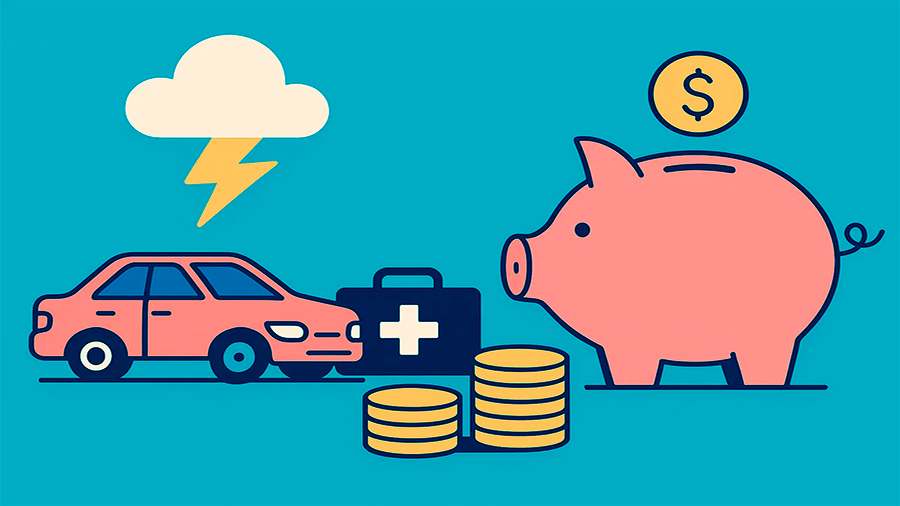Managing more than one loan is common — but managing them poorly is even more common. You’ve probably got a credit card, maybe a personal loan, a car payment, and that old financing deal for a laptop. These payments don’t just crowd your budget — they clutter your thinking. The result? Missed deadlines, rising interest, stress, and eventually, more debt. But there’s a way out. And it doesn’t require winning the lottery or getting a raise. You just need a strategy, some consistency, and a real decision to stop new borrowing until the old mess is cleaned up.
Start with Full Visibility: List Every Loan
Most people underestimate how much they owe — not because they’re dishonest, but because it’s easy to forget smaller balances or promotional financing. You need a full snapshot of your obligations. That means gathering statements, logging into apps, and even checking mail. Don’t guess. Don’t round. Be exact.
| Loan | Balance | Rate | Monthly Payment | Due Date |
|---|---|---|---|---|
| Credit Card 1 | $2,400 | 21.5% | $90 | 12th |
| Credit Card 2 | $1,800 | 24.1% | $70 | 17th |
| Car Loan | $8,750 | 6.9% | $310 | 20th |
| Personal Loan | $4,200 | 11.7% | $160 | 28th |
This table helps you prioritize. You can’t close five debts at once, but you can line them up and knock them down.

Pick a Strategy: Snowball or Avalanche
Once you see the full picture, it’s time to choose how to tackle it. Two approaches work well for most people:
Debt Snowball
Pay off the smallest balance first. It’s emotionally satisfying, gives a quick win, and builds momentum. You stay motivated.
Debt Avalanche
Target the debt with the highest interest rate. This saves the most money long-term and cuts overall repayment time. It’s the most efficient approach financially.
There’s no wrong choice here — just pick one and stick with it. If motivation matters more, start small. If numbers matter more, go by rate.
Why You Need to Stop Borrowing — Right Now
You can’t pay off debt while creating more of it. That seems obvious, but emotional spending, sales promotions, and unexpected expenses often break that logic. So cut off the flow.
- Remove saved cards from online stores.
- Unsubscribe from “buy now pay later” apps and emails.
- Freeze your credit cards (digitally or literally).
- Use only debit or cash until all loans are closed.
It’s not about suffering. It’s about clarity. If you’re repaying $700 monthly and borrowing $200 again, you’re stuck in reverse. Cutting the credit line — temporarily — helps you move forward.
Consider Refinancing or Consolidation
Sometimes it’s not about how much you owe, but how it’s structured. Consolidating several loans into one can reduce your interest, simplify payments, and lower your monthly burden.
| Before Consolidation | After Consolidation |
|---|---|
| 4 payments, 4 due dates | 1 payment, 1 due date |
| Average interest: 15.3% | New rate: 9.1% |
| $630 total per month | $485 total per month |
Just be cautious. Some consolidation offers come with fees, longer terms, or penalties. Others are traps in disguise — especially if you keep using your original cards or open new ones after consolidating.

Why Emergency Funds Matter More Than You Think
It’s tempting to throw every spare dollar toward debt. But if you don’t have at least a small emergency fund, every flat tire or medical bill sends you straight back to borrowing. Even $500 in a separate savings account protects your repayment progress. Build this first if you have nothing set aside.
Automate What You Can — Especially Minimums
Missing payments destroys your credit and adds fees. Automating minimum payments ensures you stay current. Automating extra payments helps you chip away faster without monthly mental effort. It also reduces the temptation to spend that money elsewhere.
Build Progress Tracking You Can See
Debt payoff is often invisible. You send money — and your bank balance drops. But your progress doesn’t feel real. So make it real.
- Use spreadsheets or apps that track balances over time.
- Color in a chart every time you pay off $500.
- Mark loan accounts “closed” when finished and celebrate.
Debt freedom isn’t just math. It’s emotional. Visual progress helps keep you going — especially during months when the finish line feels far away.
Watch for “New Traps” That Look Helpful
Creditors know when you’re trying to get out of debt — and they may offer balance transfers, 0% interest, or refinancing options. Some are legit. Some are bait.
Ask yourself:
- Is this offer helping me pay off debt — or just delaying it?
- Can I realistically repay it before the promo period ends?
- What happens if I’m one day late on a payment?
If the answers aren’t clear or favorable, decline the offer. Better a slower plan that works than a faster plan that backfires.
Stabilize Your Income and Expenses
If your income is irregular — freelance, tips, seasonal — debt can be harder to manage. Try separating your “paycheck” from your revenue.
Set up two bank accounts: one where money comes in, and one where you pay bills. Transfer a consistent monthly “salary” from one to the other. This simulates stability and helps you stick to a plan — even when your actual income varies.
Prevent Repeat Mistakes with Simple Rules
Closing loans is one thing. Staying debt-free is another. Many people relapse — not because they’re irresponsible, but because they don’t change habits. So create simple rules for yourself going forward:
- Never borrow for things that don’t grow in value.
- Sleep on every major purchase for 24 hours.
- Set a monthly spending cap and track it.
- Say “no” to new credit until you’ve saved at least 3 months’ expenses.
Discipline doesn’t have to be complicated — just consistent.
Conclusion
Closing multiple loans isn’t fast, but it is possible. You don’t need a windfall or miracle — you need a plan, visibility, and focus. Pay off one loan, then the next. Avoid shiny shortcuts and “special offers” unless you truly understand them. Track your wins. Celebrate the finish lines. Most importantly, protect the progress you’ve made by staying alert to new temptations. With time and structure, you’ll not only erase your debts — you’ll rewrite your entire financial story.

